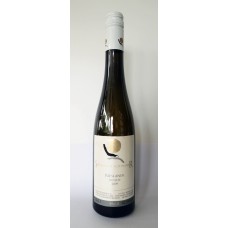Rieslaner Auslese 2009 (0.5 Liter)
If you buy 6+: SGD27.5 / bottle
Add to Compare
Rieslaner is a cross of Silvaner and Riesling that was first bred in Veitshöcheim, Franken/Bavaria, in 1921 by the grape breeder August Ziegler. It is a late-ripening grape that is high in acidity.Today it is mostly grown in the Franken and in the Pfalz (Palatinate) regions, and the grape is often affected by botrytis. Rieslaner was bred to do particularly well with botrytis, and therefore it holds great potential to form an acidic, fruity, and full yield when it is ripened.
"Auslese" means "Selection" and it is typically harvested in late autumn (November - December), when the first frost arrives, and bunches of grapes are picked.
The sugar content of Auslese in Germany must be above 83 degrees "Oechsle", which would corrrespond to unbelievable >150 g per liter of sugar. Of course, the wine after fermation has a much lower sugar content. Since the wine has a relatively high acidity, part of the sugar is "masked" by this acid.
More to read about this interesting topic of sugar content in German wines:
http://schiller-wine.blogspot.sg/2010/01/german-wine-basics-sugar-in-grape.html
This 2009 Rieslaner Auslese, shows a fine fragrance, a light sweetness (not as sweet as the Beerenauslese), and peach and tropical fruit nose. It fits well with curries, light deserts and with cheese.
Residual sugar: 77.2 g/l
Acidity: 8.3 g/l
Alcohol: 10.0%
Write a review
Your Name:Your Review: Note: HTML is not translated!
Rating: Bad Good
Enter the code in the box below:


